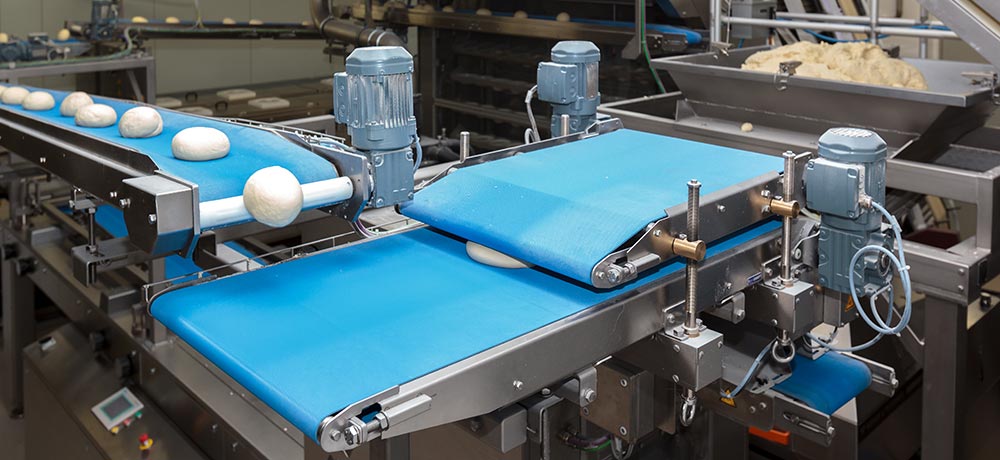Excessive heat on your food processing facilities can lead to detrimental consequences if left unmanaged. You would be taking the risk of damaging and unnecessarily wasting product, exposing your employees to the risks of heat stress and reducing their productivity - but more likely is the fact that you will be experiencing significant energy over-usage resulting in unnecessary cost burden on production.
In this blog, we look at the available options on the market that you should be considering when designing and building food manufacturing facilities that will enable you to reduce your energy usage and carbon emissions, while at the same time improving air quality and lowering the risks of airborne contaminants and temperature extremes.
Why manage heat gain?
According to a report in achieving operational excellence in food and beverage manufacturing by the Aberdeen Group, the main concerns of food manufacturers is reducing their costs, as margins are very tight. From material and labour costs to packaging and shipping, the expenses seem endless.
One of the biggest expenses for any business are its energy costs and with the use of heavy machinery in food processing and expensive AC systems, that cost can grow exponentially. In reality, 50% of the electricity consumed is for process cooling and refrigeration.
Not only this, but F-Gas Regulations 517/2014 are applying even more pressures and costs to companies that are using old air conditioning and chiller system using refrigerant gases, which are under the government phase out plans. F-gases, such as the R404a and R507 have already seen an extraordinary increase of 62% last year due to the reduction of import and tightening of the regulations. These prices would only continue rising during the rapid phase out, causing serious concerns within the industry of a full blown refrigerant crisis due to the lack of information on what to do next.
Putting cost aside, temperature control is vital within food manufacturing in order to comply with your obligations under the Food Hygiene Regulations 2006, which place responsibility on you as a duty holder to manage and eliminate the risks of the reproduction of pathogenic microorganisms or the formation of toxins, which can be supported by poor air quality.
And while a business can’t exist without money, let’s not forget about those people behind the scene that make the magic happen, your employees. Providing a comfortable work environment for your staff will not only help you be compliant with your obligations under the Health & Safety at Work Act 1974 and reduce the risks of heat stress, but also increase their productivity.
Research lead by the Helsinki University of Technology and The Lawrence Berkeley National Laboratory revealed an average of 2% decrement in work performance per degree ℃ temperature rise when the temperature is above 25℃. High temperatures not only affect productivity, but also increase the chances of accidents and incidents, which directly places you in breach of your duties to provide an acceptable work environment for your employees.
How to manage heat gain efficiently, while reducing costs?
If anyone tells you that heat gain management is as easy as installing ventilation and an air conditioning unit on site, do not believe them. The process is not and should never be that straightforward. What you would want is a synchronised and symbiotic building, each part of which communicates with each together and works together to achieve the necessary temperatures that will ensure the safety of your product and comfort of your employees, while delivering low energy usage with as little as carbon footprint as possible.
When initially designing and specifying the facility any of the following factors are incredibly important to consider as each one plays small, but significant role in the retention of and protection against heat:
- Glazing and insulation of the building (both walls and roof)
- Use of solar shading
- Ventilation
- Building footprint - narrow footprints allow for passive cooling and heating, and prevent deep floor plans
- Thermal mass, such as building material used, radiant barriers, green roofs, etc.
While all these aspects play their own part of reducing heat gain, the one that we’d like to draw your attention to are ventilation and natural and mechanical air conditioning, as these are the two things that will determine whether you’ll be able to reduce your energy usage up to 80% and significantly lower or even eliminate your carbon footprint.
Ventilation
If you’re designing your building to be quite high, let’s say 12m, then with the right natural ventilation in place you could cool only the first 4m of the building and let the rest of the heat build up. The temperature per metre can rise by one degree, so in a 12m high building, if at the bottom the temperature is 20℃, high level temperatures can exceed 30℃. By releasing this body of high level heat simply opening with natural ventilation louvres this heat removal will reduce significantly temperatures at working level. We can then use low level louvers and use heat generated to push air out without any mechanical involvement.
Natural ventilation is a good and environmentally friendly option, if we add supply air with our adiabatic cooling systems in most cases it can provide cool ambient temperatures throughout buildings without any use of costly air conditioning systems.and achieve the necessary temperatures that are required for your products safety and hygiene compliance.
Evaporative cooling
Evaporative cooling technology has changed significantly from its predecessors known as swamp coolers. Innovative technology today can deliver up to 80% energy efficiency even in the UK without introducing any moisture in the air. Besides using the absolute minimum of energy, this cooling technique, unlike air conditioning technology which re-circulates the same indoor air, will also introduce 100% clean, fresh air into your environment, which will help you keep at bait condensation and will eliminate the risks of any airborne contaminants.
Here at Cosaf, we offer the first real environmentally friendly alternative to traditional AHU Chiller applications and air conditioning systems. Our Air2O system can replace most traditional air control systems, delivering the unprecedented benefits of 80% energy savings.
Find out how much you could be saving on your facilities with our free to use Evaporative Cooling Cost Comparison Calculator.
Transferring heat and reusing energy
Not all heat needs to be eliminated and sometimes it can actually be reused. If let’s say, you had another part of the factory that was cold, you could easily transfer excessive heat from the part that is too warm to the part that needs heating.
How does this work? In the ventilation system, we can place a coil and the hot air that passes through will heat the air in the coil, the water that has been heated will be transferred to another unit, bringing fresh air into that space and heating that fresh air coming in, so we just take the energy from the hot side and put it into the cold. The dirty air from the side of factory would be released back into the atmosphere, therefore, no recirculation of air would happen. The energy can be used for many different purposes, not just to heat other spaces, we can put it into water and have hot water as much as you like, whether that is to heat taps or showers.
Sustainability is on the top list of many organisations and with the more and more stringent F-Gas regulations, the earlier you start taking measures to build more environmentally friendly and energy efficient facilities, the better your business will do with least cost.
However, to be able to achieve this you need to have the right HVAC partner on your side, that has the experience and expertise to analyse new or existing facilities and come up with an HVAC system that will require less operational and maintenance costs and will put you on the forefront of green businesses out there.
Why not have a go at our quick and easy to use Evaporative Cooling Cost Comparison Calculator.







Comment on my blog